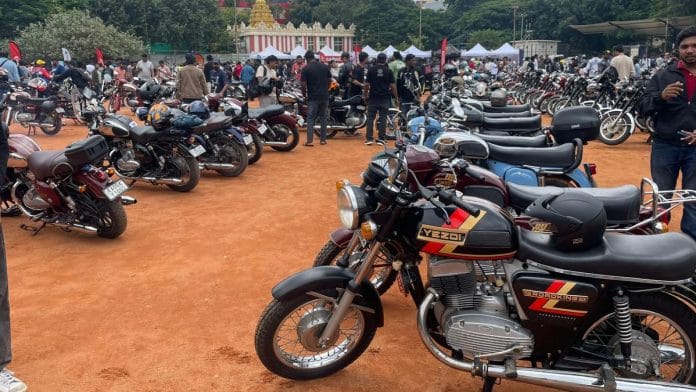Bengaluru: Loud, metallic growls fill the air at Shalini Grounds, Jayanagar. The open space is lined with rows of vintage and classic bikes—massive machines with two-stroke engines. For local residents who can’t stand the raspy, chainsaw-like noise, the gathering is a nightmare. But for motorcycle enthusiasts, it’s a celebration of shared nostalgia and culture.
At the 23rd Annual Jawa Day celebrations earlier this month, the young and old come together to revel in the iconic bike brand. This is no gathering of stereotypical bearded, tattooed bikers. Grandfathers take their grandchildren for spins around the ground, while a lemon-and-spoon race—on bikes—draws cheers from the crowd. Shy teens ask owners for pictures with their noisy family heirlooms. It’s a slice of Bengaluru’s rich two-stroke subculture, even as these bikes fade into the sunset in many cities.
“The way these two-stroke bikes sound, the way they move, even the smell of the oil—that’s what makes them popular even today,” said Sandesh Kumar, owner of ReflectON, an automotive restoration, detailing, and painting shop. “This is the largest gathering of Jawa and Yezdi bikes in the world.”
As emission norms get stricter and spaces for fuel-guzzling vehicles shrink, especially in big cities, Bengaluru remains an oasis for enthusiasts who are still in love with old machines. Two-stroke bikes are no longer manufactured in India. Production was phased out in the early 2000s on the back of tighter environmental regulations, the rise of quieter, more efficient four-stroke engines, and a shift in consumer preferences.
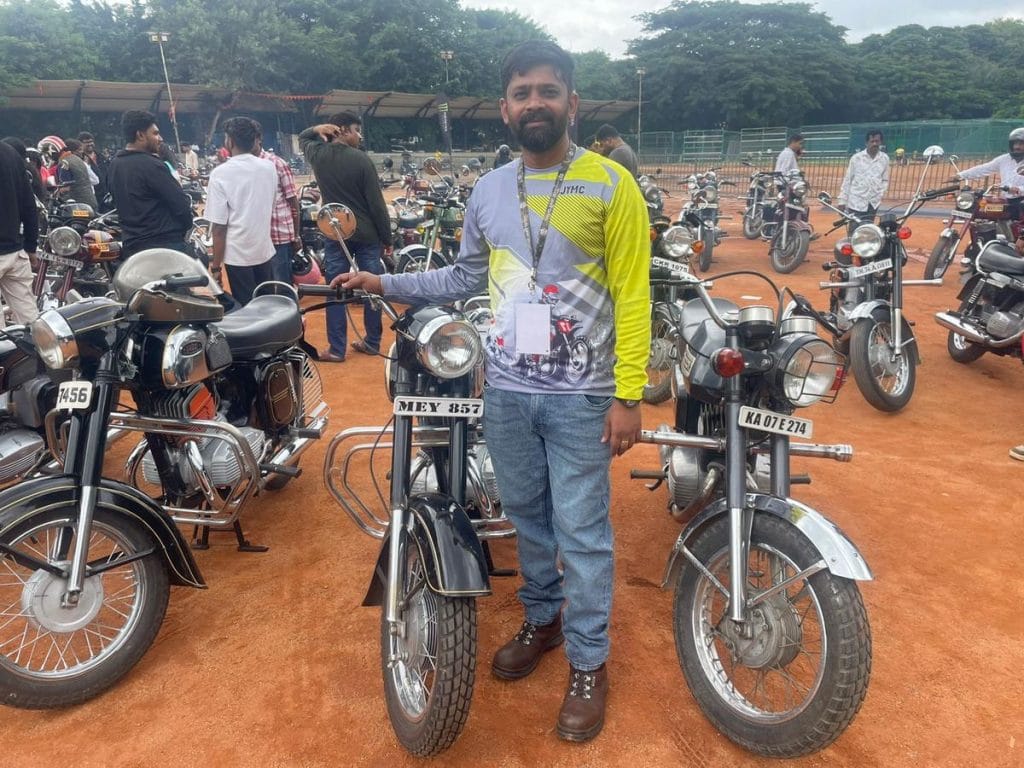
But unlike northern cities such as Delhi, Bengaluru’s roads are still filled with the rumble of two-stroke models: Yamaha’s RX100 and RD350; Suzuki’s Shogun, Samurai, AX100, and MAX100; and Lambretta scooters. The unique culture here runs deep. Mechanics and restoration shops dot the city, bike clubs go on monthly rides, and vintage models are handed down over generations. There’s also an element of local pride: some Jawa and Yezdi models have their manufacturing roots in nearby Mysore.
“These bikes are not easily available in the market,” said Vishal Agarwal, founder of the India RD club, an informal community of Yamaha RD350 enthusiasts with chapters across the country, including Mumbai, Nashik, and Chandigarh. “You can’t just throw money and buy these bikes. You need to hunt for them, build them, run around between mechanics. Only passionate people will get into this.”
Also Read: Indian women bikers are revving up Royal Enfields, Hondas. Bankers, beauticians & bahus
RD reboot
Twenty-eight-year-old Subhash Gowda lies on his back in his Koramangala garage, greased hands tinkering with a white and green KTM superbike. His workshop is one of the few in the city with the expertise to service vintage bikes, including the legendary RD350—often called India’s first enthusiast’s bike. The RD, which came to stand for ‘Race Delivered’, was the heartthrob of many young men in the 1980s.
“Today, the RD350 is a collector’s item,” said Gowda, who started the garage with his partner, 42-year-old Dheeraj Acharya, four years ago. “When this bike was introduced in India in the ’80s, it was sold as the Rajdoot 350 (known internationally as the RD350). They were very fast, even by today’s standards.”
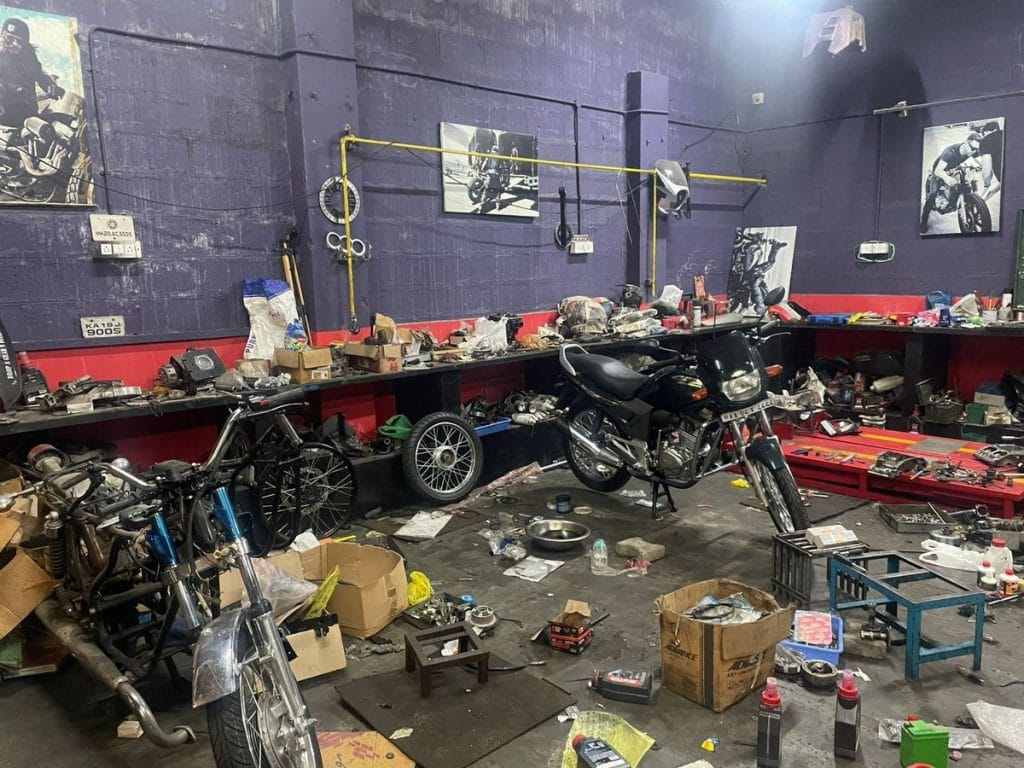
Gowda’s tryst with bikes began in 2016, during his college days in Mangaluru, when he got a 1996 Yezdi Roadking. At the time, most mechanics didn’t have the expertise to work on these machines, so Gowda purchased his own tools and began experimenting with the parts himself. The seed had been planted. After graduating with an engineering degree, he took up an apprenticeship at Joe’s Garage in Shivajinagar, Bengaluru.
“I didn’t even wait for my results,” said Gowda, laughing at his own impatience and gesturing to the multi-coloured, premium bikes in his garage. “But it was the best decision ever. I got to work on the most exotic bikes.”
In the 1980s, [RDs] sold for anywhere between Rs 26,000 and Rs 30,000, which was a lot for that time. But today, they can go for anywhere between Rs 6 lakh and Rs 12 lakh
–Subhash Gowda, garage owner
His partner, Acharya, is equally passionate. A former interior designer at Larsen & Toubro, he got his RD350 as a gift in 2000.
“My dad bought the bike in 1987 and handed it over to me after I completed my 10th standard exams,” he said, adding that he’s been riding the same machine ever since.
The Rajdoot 350 hit Indian roads in 1983 through a collaboration between Escorts Group and Yamaha Japan. The bike packed a serious punch—the Indian model delivered 30 bhp (brake horsepower), nearly double the 17-18 bhp offered by Royal Enfield’s Bullet 350, the country’s most popular bike back then.
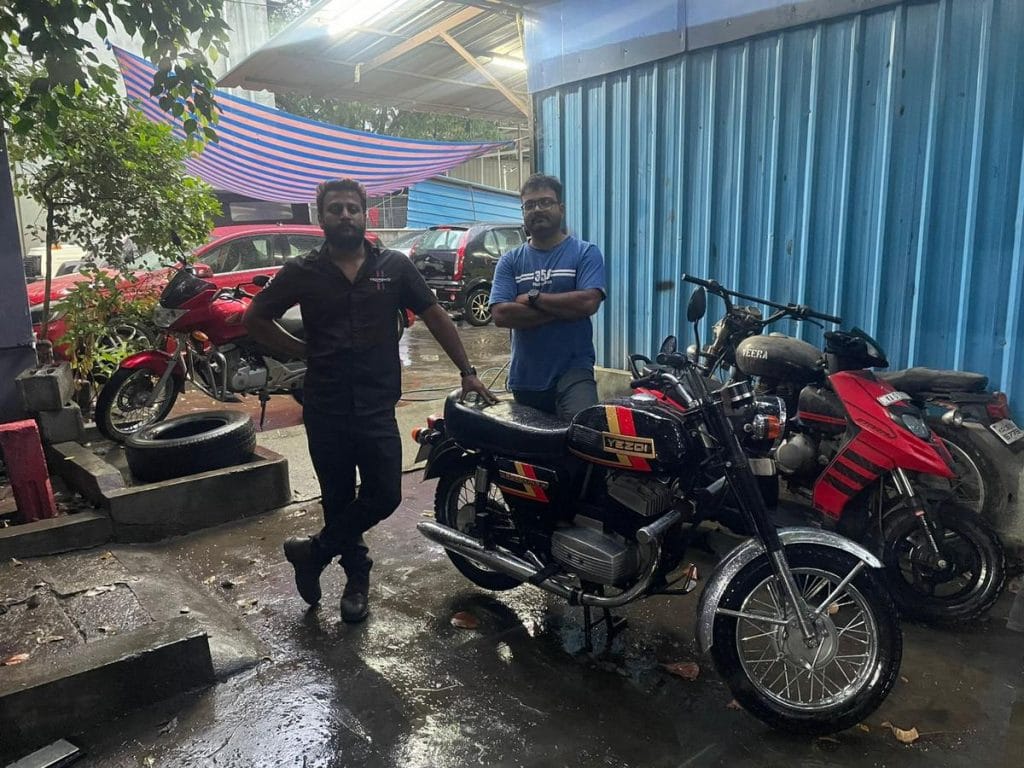
“These bikes were given to policemen at the time, who were earlier riding Bullets,” said Gowda, pointing to an old Rajdoot 350 gathering dust in his garage. “They were fast. Lots of policemen had crashes, some even died.”
By 1989, the bikes were discontinued. Poor mileage and brake systems, growing emission regulations, and the lack of trained mechanics (two-stroke engines were relatively new then) all contributed to its decline. The frequent crashes gave rise to nicknames like ‘Racing Death’ and ‘Yamdoot’—a portmanteau of Yama, the god of death, and Rajdoot. Today, though, the bike enjoys a cult following.
“In the 1980s, these bikes sold for anywhere between Rs 26,000 and Rs 30,000, which was a lot for that time,” said Gowda. “But today, they can go for anywhere between Rs 6 lakh and Rs 12 lakh.”
Keeping two-strokes running
The resurgence of the RD350—and many other vintage bikes from the ’80s and ’90s—can be credited to their design, engineering, and distinctive engine roar. They may not match modern four-strokes in fuel efficiency, but owners say they can take their two-strokes for long rides without worrying about midway breakdowns. Gowda, for one, has clocked over 1.9 lakh kilometres on his Yezdi Roadking.
“Even after 40 years, these bikes are smooth,” said Gowda. “Compared to most modern four-stroke bikes, they have almost zero vibration because of fewer moving parts in the engine. There are no valves to adjust, no timing chain—so it’s almost zero maintenance. You build it, you ride it.”
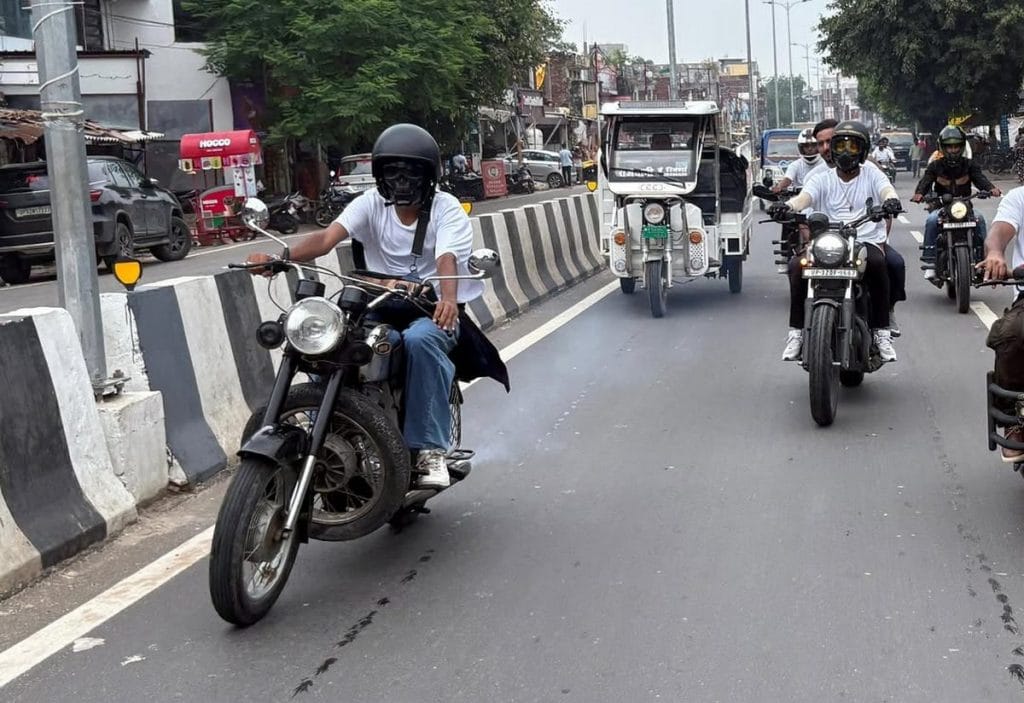
Acharya motioned to a superbike, manufactured by Austrian brand KTM, now owned by Bajaj, taking up space at the centre of the garage. The bike had done just shy of 42,000 kilometres, but required a full engine rebuild which cost the owner Rs 60,000. An engine rebuild for the older two-stroke bikes costs less than half at Acharya’s garage.
Gowda pointed out that two-stroke engines deliver more power than their four-stroke counterparts, even with the same 100cc engine displacement—the total volume of air and fuel mixture the cylinders push through in one cycle.
RD350s aren’t even the most popular classic Yamaha bike on Bengaluru’s streets. That crown is worn by the RX series. Lightweight, single-cylinder, more accessible and easier to maintain, the RX100 and RX135 are a favourite among the city’s youth, many of whom use the bikes in drag races.
These bikes are getting older and older. But I think the popularity will continue with the next generation. People will want to understand the passion their fathers or grandfathers had for them
-Vishal Agarwal, founder of the RD club
RX enthusiasts are tuning and modifying their bikes, increasing the top speed to 160 kilometres per hour—the same speed that modern 400cc bikes achieve, despite the RX’s smaller engine.
“The original bike (RX135) which comes from the factory can do between 100-120 kilometres per hour, with a small 132cc engine,” said Acharya, adding this is why the smaller Yamaha models are still sought-after in 2025. “You still get OEM (original equipment manufacturer) parts because the bike is popular in Thailand, Indonesia, and Malaysia.”
In addition to OEM parts, specialised aftermarket parts—replicated by third-party manufacturers—are also available. But Gowda did warn that aftermarket parts manufactured in India don’t fit as well compared to those available abroad, which are pricier but sometimes work even better than the originals.
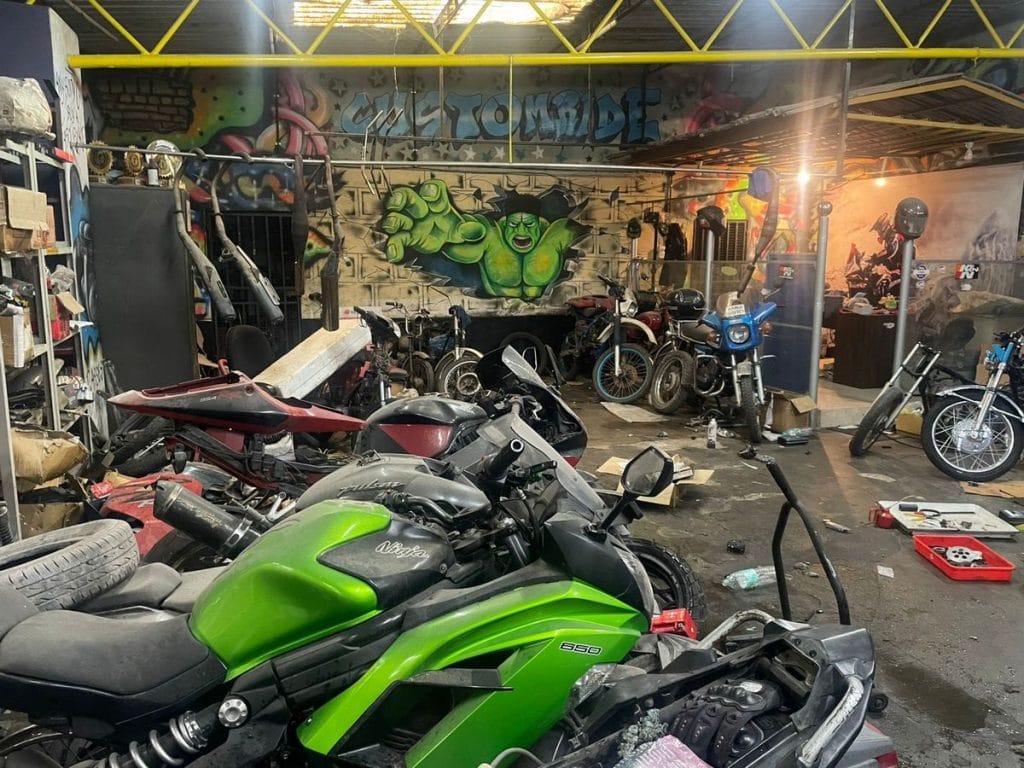
Because of fewer parts inside two-stroke bikes, the garage only does full restorations or engine rebuilds. There isn’t much maintenance work. If an RX has been lying dormant for a few decades and requires a rebuild from scratch, a basic restoration will cost the owner Rs 1 lakh. For the RD350 series, a full restoration costs a minimum of Rs 2 lakh on account of more expensive parts.
“Twenty years ago, RD owners would sell their bikes for cheap and ask me to scrap it,” said Acharya, noting that fuel inefficiency and mounting maintenance costs were the primary reasons. “They might have sold it for anywhere between Rs 2,000 and Rs 5,000. Today, they can be more expensive than modern 1,000 cc superbikes.” Modern superbikes like the Kawasaki Ninja 1000SX, Yamaha R1, and BMW S1000RR typically retail for under Rs 12 lakh—the upper limit for RD350 resales, according to restorers.
Also Read: Jawa failed to compete with efficient Japanese bikes. It is now making a mark after relaunch
Riders unite
Giant Yezdi and Jawa flags dot the open ground. The branding is on tents, banners, and T-shirts alike. Riders mill about and eye each other’s bikes over breakfast and chai, included in the Rs 400 entry fee to the Annual Jawa Day.
Organised by the Bangalore Jawa Yezdi Motorcycle Club, founded in 2007, the event has drawn a large and diverse crowd of enthusiasts, along with sponsors such as The Good Biker, an AI-powered biking community app, and Chamundi Motors, a retailer of three-wheelers.
A family of three takes a picture on the main stage after winning one of the many simple games organised at the event. All are wearing pale yellow T-shirts printed with an image of an ape evolving into a man riding a Jawa. Below it, the text reads: ‘Darwin didn’t see this coming.’
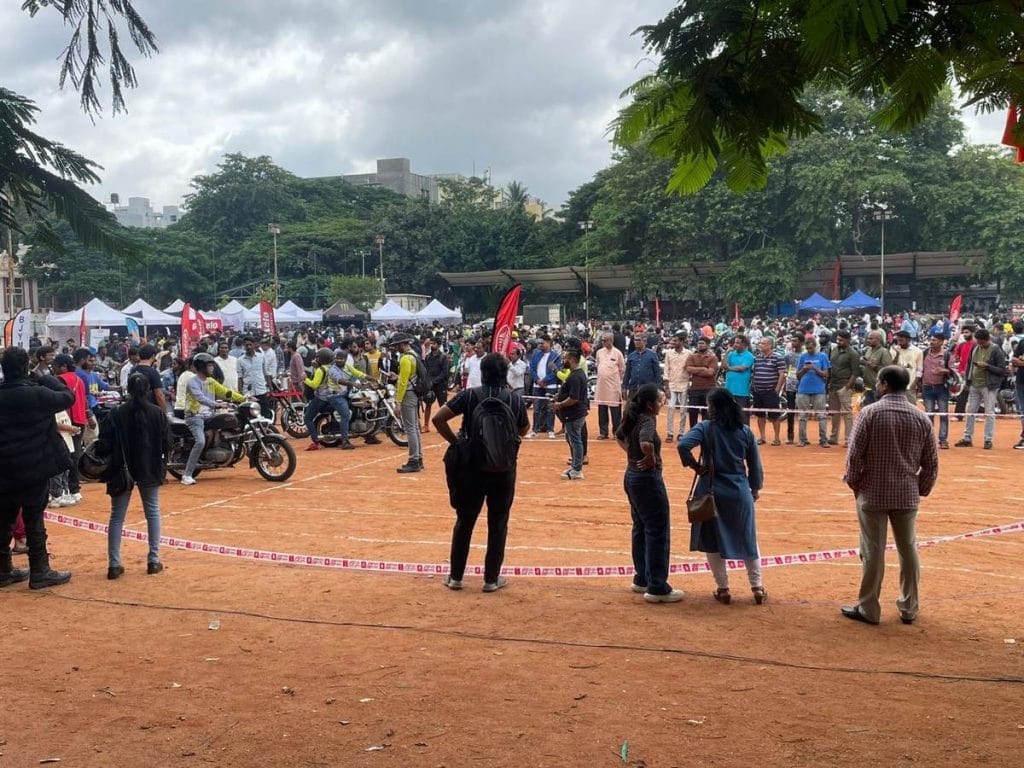
“More than half of the bikes here have outlived the original owner,” said Sandesh Kumar, who was manning the registration booth. The volunteer turnout is strong—scores of enthusiasts giving their time to a brand they deeply identify with. “Since they’re out of production, most of the bikes have been passed on to the second and third generation.”
Jawa was founded in Prague in 1929 but found a second home in Mysore. In 1960, Ideal Jawa Limited, a Mysore-based motorcycle company, began building the bikes under a licence agreement. In 1973, the company began manufacturing bikes under the Yezdi brand name. Bengaluru’s proximity to Mysore, and thus the easy availability of parts, helped the bikes take off in the city.
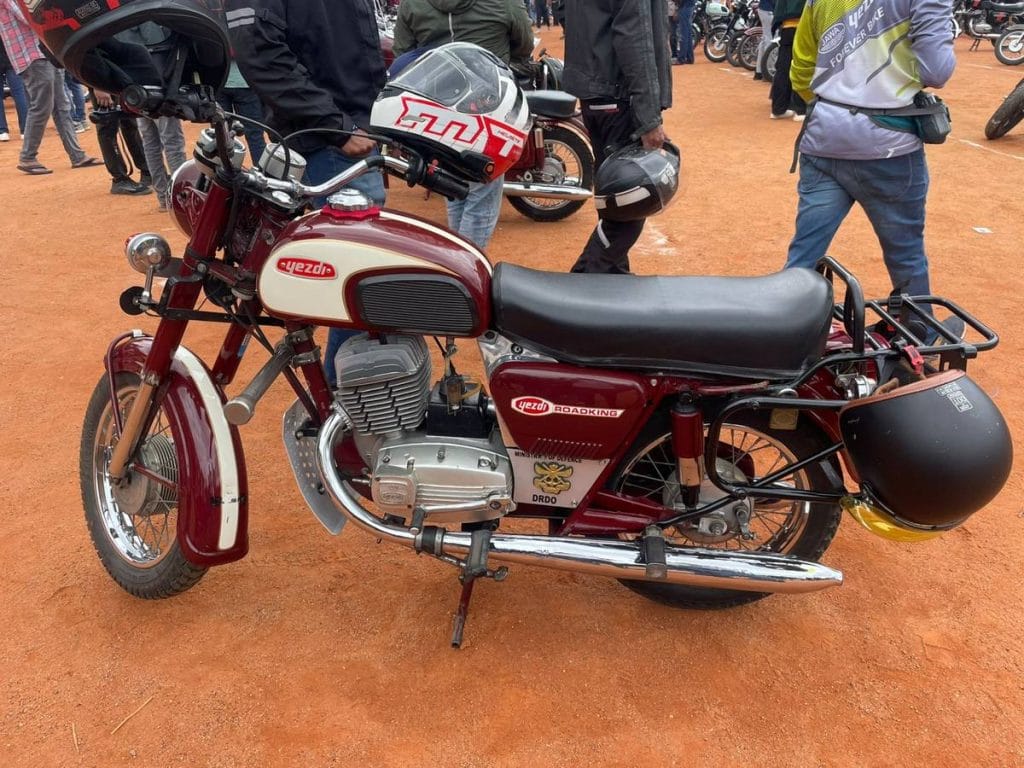
Bengaluru was a growing city at the time. These were called the milkman’s bike—people would carry luggage on it, travel long distances,” said Kumar, gesturing to the sturdy Yezdi and Jawa models in front of him.
Kumar pointed to a Jawa that was about to be kick-started. The same lever used for changing gears is rotated backward to fire up the engine—a unique feature where the kicker and gear shifter are one and the same.
“The manufacturer simplified everything,” said Kumar with a proud smile.
Unlike Yamaha parts, which are available internationally, vintage Jawa and Yezdi spares aren’t easy to find. A few shops, collectors, and original suppliers still have old stock, but this, Kumar says, is where the art comes in.
“Why do you think so many people have gathered here today? It’s all about sharing knowledge, forming a community,” he said, pointing to a rare flower-head-shaped part on one of the bikes. “This part is very rare, so it is highly coveted.”
Members of the city’s RD club meet on the first Sunday of every month at the famous Airlines Hotel, a routine that goes back 17 years.
“We meet for breakfast, have a coffee, and discuss each other’s bikes,” said Vishal Agarwal, founder of the RD club, which now has over 1,000 members across the country. “We don’t get into the buying or selling of bikes, don’t do social or promotional events—it’s only about maintaining and riding the bikes.”
Also Read: DTC’s lost decade—model fleet to mess. Electric overhaul is the new hope
Law, loopholes, legacy
Two-strokes began vanishing from showrooms long ago. Ideal Jawa shut down in 1996. The Rajdoot 350 was discontinued in 1989, the RX100 in 1996, and the RX135 in 2005.
The Bharat Stage standards, introduced in 2000, kept getting stricter, and by the mid-2000s, the production of two-strokes halted completely, Still, if a vintage bike had valid papers and a pollution certificate, it could legally stay on the road—except in Delhi, where court orders banned older vehicles altogether. A proposed refuelling ban might now be the final nail in what’s left of the capital’s two-stroke culture.
But Bengaluru still gives old bikes some breathing room.
Vehicles over 50 years old can apply for a vintage registration, as long as they are in their original form, with no modifications. A fee of Rs 20,000 is charged for a new registration and Rs 5,000 for subsequent re-registration every 10 years. While vintage vehicles are only meant for occasional use, such as rallies or leisure rides, enforcement of these rules in Karnataka is relatively lax.
“Here we get vintage number plates for our bikes,” said Kumar, referring to the vintage motor vehicle category introduced by the Ministry of Road Transport and Highways in 2021. “Only vehicles above 50 years of age can avail the benefit, but the government should introduce it for 30- and 40-year-old vehicles too.”
Two-strokes that aren’t yet 50 years old don’t qualify for vintage registration, but they can stay on the road in Karnataka with a valid Fitness Certificate. Once a vehicle crosses 15 years, it needs to pass an inspection and the certificate needs to be renewed every five years. For most two-stroke owners, Vishal Agarwal says, it’s just a formality as bikes are usually kept great shape by their loving owners.
ReflectON’s Sandesh Kumar isn’t as optimistic about how well the machines are maintained. As a mechanic himself, he says the fraternity is rapidly declining. People like Acharya and Gowda may be the last of a dying breed of two-stroke mechanics.
“The next generation, they like being in the digital world. They are interested in keeping the bikes and riding them, but not getting their hands dirty,” he said, adding that after the current generation, mechanic numbers are likely to drop sharply.
But for now, at least in Bengaluru, the torch is being passed. A grey-haired man in a crisp white dhoti takes his black Jawa for a spin around the ground, leaving behind a trail of smoke and noise. A few metres behind him, a young teenager rides an equally large two-stroke, a mischievous grin on his face.
“Look, these bikes are getting older and older,” said Agarwal, as he watched the multigenerational crowd. “But I think the popularity will continue with the next generation. People will want to understand the passion their fathers or grandfathers had for them.”
(Edited by Asavari Singh)



